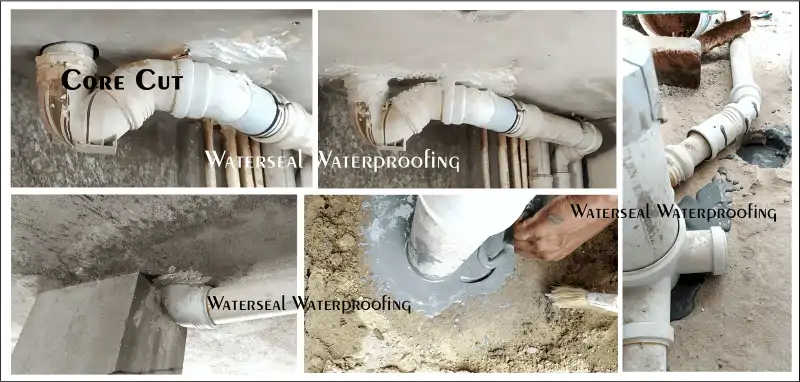Trusted Method for New Bathroom Waterproofing
New Bathroom Waterproofing for Long life Protection Against Leaks
New Bathroom Waterproofing
New Bathroom waterproofing is an important aspect of construction and renovation that ensures the longevity, functionality, and aesthetics of the space. Bathrooms are high-moisture areas, and without proper waterproofing, water intrusion can lead to structural damage, mold growth, and costly repairs. Here, we’ll discuss the importance of bathroom waterproofing, methods, materials, and best practices for creating a watertight and durable bathroom.
Get expert bathroom waterproofing services to prevent leaks. Contact us today for a free quote!
Why is Bathroom Waterproofing Important?
- Prevents Water Damage: Waterproofing protects walls, floors, and structural elements from water infiltration, which can cause cracks, rot, and deterioration.
- Stops Mold and Mildew: Moisture buildup can lead to mold growth, which poses health risks and damages surfaces.
- Enhances Durability: Waterproofing extends the lifespan of bathroom fixtures, tiles, and finishes.
- Maintains Aesthetic Appeal: Prevents stains, peeling paint, and warped materials, keeping the bathroom looking fresh and clean.
- Saves Money: Avoids costly repairs caused by water damage and mold remediation.
Method for New Bathroom Waterproofing
Proper waterproofing is essential in bathrooms to prevent seepage, dampness, and structural damage. The following step-by-step method ensures an effective waterproofing solution:
Step-by-Step Waterproofing Process
Cleaning the Floor Area
- Thoroughly clean the bathroom floor to remove dust, debris, and grease.
- Ensure the surface is dry before proceeding to the next step.
Core Filling
- Fill all visible cracks, gaps, and holes with appropriate fillers.
- Seal joints around drains, pipes, and sanitary fittings to prevent water penetration.
First Layer – Crack Sealing with Silicone
- Apply a diluted silicone solution to penetrate and seal invisible cracks and small holes.
- Allow sufficient drying time before applying the next layer.
Second and Third Layers – Strengthening the Surface
- Apply two additional layers of a silicone-based sealant for enhanced waterproofing.
- Each layer should be allowed to dry completely before applying the next.
Final Layer – Waterseal PSV Application
- Use a sprayer or brush to apply Waterseal PSV, ensuring even coverage over the surface.
- This final coat provides long-lasting protection against water seepage.
Get Service with a five-year Guarantee
Bathroom Waterproofing Rate
- New Construction-Bathroom Waterproofing Rs. 80/-Per Sq.ft (Minimum Rs.5,000/-) Per Bathroom.
- Core Cut Filling With Non-Shrink High Strength Grouting Powder + Psv : Rs.700/- Per Core
Best Chemical Waterproofing Solutions for Bathrooms
- Waterseal PSV –(Polymerized Silicone Vinyl ) Provides an additional protective layer to prevent seepage.
- Silicone-Based Sealants – Ideal for sealing cracks and preventing moisture penetration.
- Epoxy Grout and Sealers – Excellent for tile joints, offering superior water resistance..
- Polyurethane or Cement-Based Waterproofing – Used for heavy-duty protection in high-moisture areas.
By following this method, you can ensure a durable, leak-proof, and long-lasting bathroom waterproofing system.


Non Shrink Grouting Powder is the ideal choice for professional grouting. This ready-to-use dry mix expands during curing to prevent shrinkage while requiring minimal water. BUY NOW
New Bathroom Waterproofing Demo
In this video, we demonstrate a modern and highly effective approach to waterproofing a new bathroom. The process covers sealing core cut holes, applying advanced waterproof coatings, and ensuring a professional finish. Whether you are constructing a new home or renovating an existing one, proper bathroom waterproofing is essential to avoid leaks, dampness, and structural issues.
Our method guarantees complete protection by using premium waterproofing chemicals and expert application techniques. Watch the step-by-step process as we waterproof a bathroom floor and properly seal drainage pipe cut-outs to prevent water seepage.
What You’ll Learn in the Demo Video:
✔ Sealing core cut holes
✔ Applying waterproofing chemicals on floors and walls
✔ Proper curing techniques for long-lasting results
